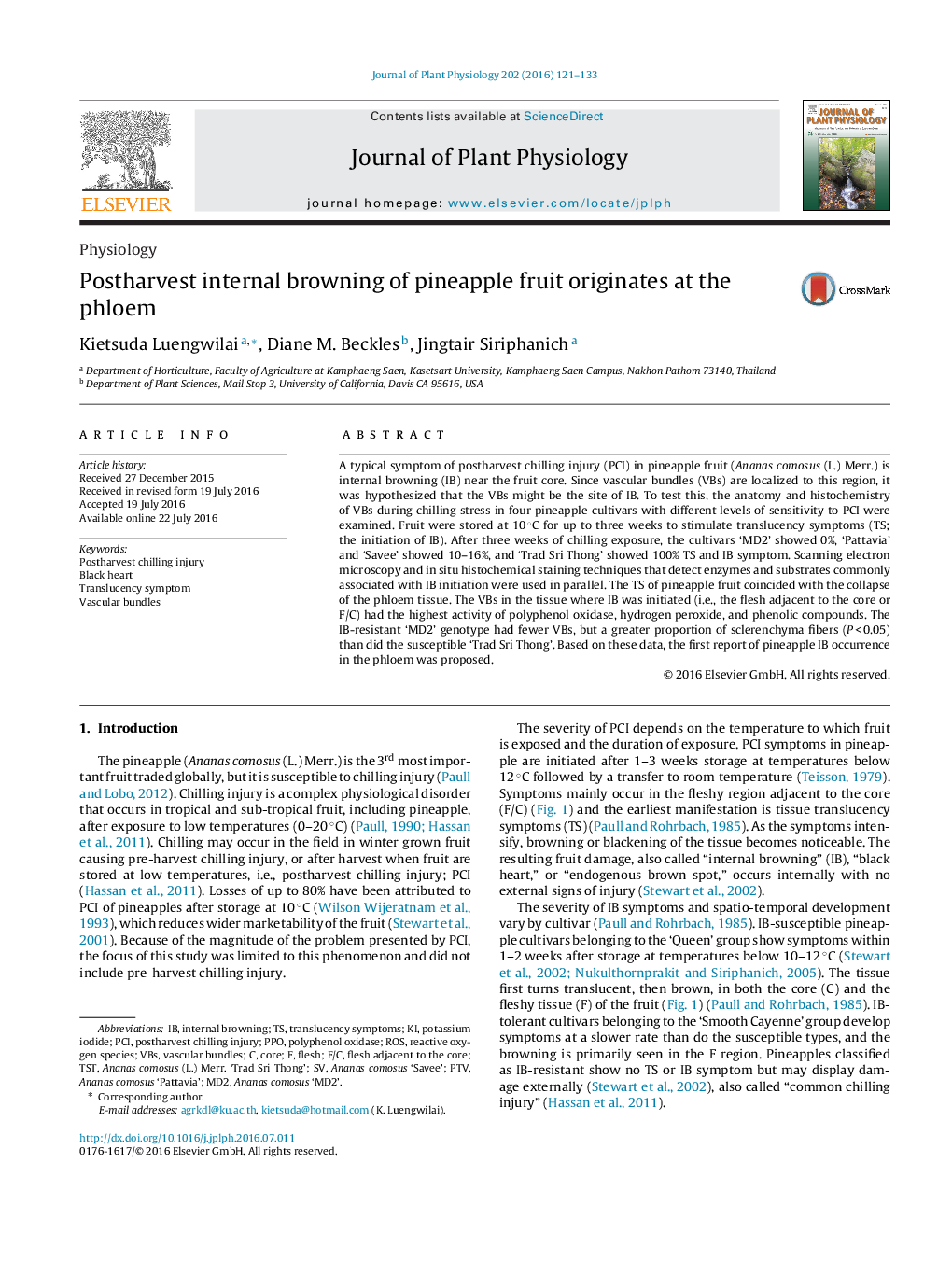| Article ID | Journal | Published Year | Pages | File Type |
|---|---|---|---|---|
| 2055391 | Journal of Plant Physiology | 2016 | 13 Pages |
•Internal browning (IB) due to chilling in pineapple fruit was co-localized to the phloem.•Affected areas of the fruit had a relatively higher density of vascular bundles (VB).•In situ detection of IB marker biochemical activity coincided with VB and IB areas.•The organization of the VB was different in IB susceptible vs. resistant pineapples.
A typical symptom of postharvest chilling injury (PCI) in pineapple fruit (Ananas comosus (L.) Merr.) is internal browning (IB) near the fruit core. Since vascular bundles (VBs) are localized to this region, it was hypothesized that the VBs might be the site of IB. To test this, the anatomy and histochemistry of VBs during chilling stress in four pineapple cultivars with different levels of sensitivity to PCI were examined. Fruit were stored at 10 °C for up to three weeks to stimulate translucency symptoms (TS; the initiation of IB). After three weeks of chilling exposure, the cultivars ‘MD2’ showed 0%, ‘Pattavia’ and ‘Savee’ showed 10–16%, and ‘Trad Sri Thong’ showed 100% TS and IB symptom. Scanning electron microscopy and in situ histochemical staining techniques that detect enzymes and substrates commonly associated with IB initiation were used in parallel. The TS of pineapple fruit coincided with the collapse of the phloem tissue. The VBs in the tissue where IB was initiated (i.e., the flesh adjacent to the core or F/C) had the highest activity of polyphenol oxidase, hydrogen peroxide, and phenolic compounds. The IB-resistant ‘MD2’ genotype had fewer VBs, but a greater proportion of sclerenchyma fibers (P < 0.05) than did the susceptible ‘Trad Sri Thong’. Based on these data, the first report of pineapple IB occurrence in the phloem was proposed.
